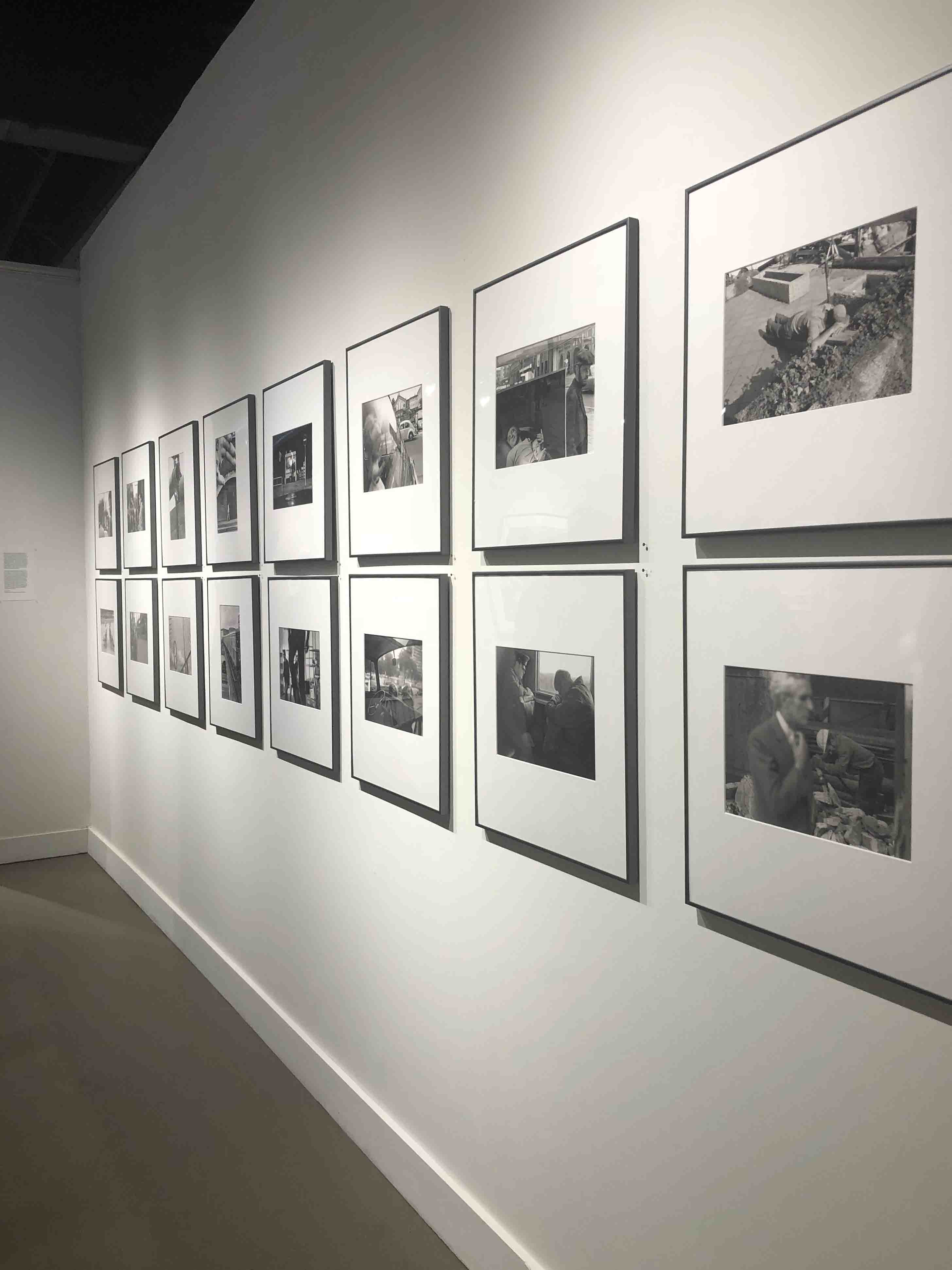
Photographs from 1974 East Berlin and sculptures of sea slugs sit side by side at the fall exhibits at the Kehler Liddell Gallery in Westville.
The first exhibit, entitled Taking Sides, features work by New Haven photographer Sven Martson who recently published a book with photographs of daily life in East Berlin before the fall of the Berlin wall. Sculptor Gar Waterman created the second exhibit, entitled Canaries in a Blue Coal Mine. His work aims to draw attention to the impact of ocean acidification on sea creatures through his sculptures of animals such as cephalopods, sea slugs and fish. Both exhibits will be on display until October 7.
“Sven is covering what humans are doing to each other and my show is more about what we are doing to the environment,” Waterman said at the show’s opening on Sunday . “Both of our shows show how we are interacting we each other in one case and also how we are interacting with the world and the creatures that are in it.”
Both artists said their work is deeply influenced by their histories.
Martson’s interest in life in Cold War-era Berlin originated with his family, many of whom were separated when the wall went up in Berlin. He lived in East Germany for three years where he photographed the people and urban landscapes that he saw. He published his book forty years later.
His work moves away from the images of suffering commonly associated with this period in Berlin and focuses on the ways that people moved through their daily lives with the presence of the wall. Some of his favorite pieces include a photograph of mannequins that reflects Christian crosses in the background and a photo of people in a cafe contrasted against the street view which he said “points to the differences in what was supposed to have been an egalitarian society.”
Waterman’s father was an early pioneer of underwater films, and he began diving at a young age before becoming an artist.
“The more I learned about the creatures I was sculpting, the more fascinated I became with their biology,” Waterman said. “I wanted to use my work to leverage making people look at some of the creatures we are putting out of business with ocean acidification.”
Above each of his sculptures there is a short description of the animal as well as some of the threats they are facing due to ocean acidification. Waterman said that he hopes that people will become more aware of how “extraordinary” these creatures are when considering how they behave towards the environment.
Martson also discussed the role that art can play in changing people’s perspectives.
“[The photos] seems more relevant now, on account of borders like our own southern border and borders, fences, barriers, walls and so on that are being built in Europe to regulate migrants and refugees,” Martson told the News. “My point is that none of that stuff really works. I don’t think the Great Wall of China really worked, I don’t think Adrian’s wall worked, I don’t think any of them ever worked. It’s kind of a silly business and there needs to be solutions.”
The exhibit did seem to have an impact on some of the opening reception attendees.
Elm City resident Patricia Duff was already aware of Martson and Waterman’s work, but she said that the photographs and sculptures had an enormous impact on her. She remembered hearing about the Berlin Wall going up and being torn down and enjoyed getting a different perspective through the photographs. She also loved interacting with Waterman’s sculptures.
“I knew nothing about sea slugs,” she said. “It is absolutely mind-boggling and I learned so much. I just like the fact that he lets you touch all these pieces. He has created a record of something that is disappearing.”
The Kehler Liddell Gallery is located on 873 Whalley Ave.
Carolyn Sacco | carolyn.sacco@yale.edu







